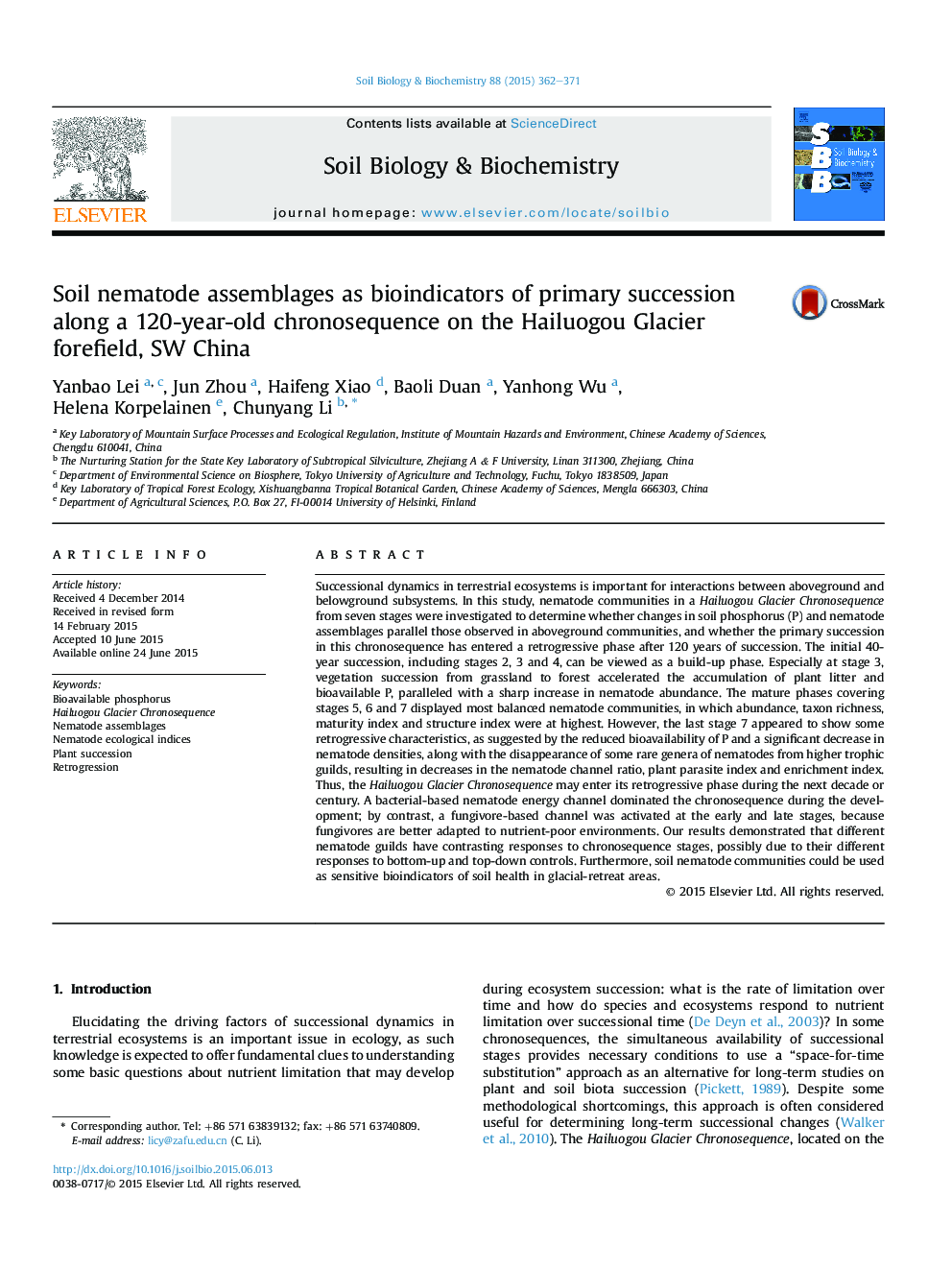| کد مقاله | کد نشریه | سال انتشار | مقاله انگلیسی | نسخه تمام متن |
|---|---|---|---|---|
| 8364084 | 1542596 | 2015 | 10 صفحه PDF | دانلود رایگان |
عنوان انگلیسی مقاله ISI
Soil nematode assemblages as bioindicators of primary succession along a 120-year-old chronosequence on the Hailuogou Glacier forefield, SW China
دانلود مقاله + سفارش ترجمه
دانلود مقاله ISI انگلیسی
رایگان برای ایرانیان
کلمات کلیدی
موضوعات مرتبط
علوم زیستی و بیوفناوری
علوم کشاورزی و بیولوژیک
دانش خاک شناسی
پیش نمایش صفحه اول مقاله

چکیده انگلیسی
Successional dynamics in terrestrial ecosystems is important for interactions between aboveground and belowground subsystems. In this study, nematode communities in a Hailuogou Glacier Chronosequence from seven stages were investigated to determine whether changes in soil phosphorus (P) and nematode assemblages parallel those observed in aboveground communities, and whether the primary succession in this chronosequence has entered a retrogressive phase after 120 years of succession. The initial 40-year succession, including stages 2, 3 and 4, can be viewed as a build-up phase. Especially at stage 3, vegetation succession from grassland to forest accelerated the accumulation of plant litter and bioavailable P, paralleled with a sharp increase in nematode abundance. The mature phases covering stages 5, 6 and 7 displayed most balanced nematode communities, in which abundance, taxon richness, maturity index and structure index were at highest. However, the last stage 7 appeared to show some retrogressive characteristics, as suggested by the reduced bioavailability of P and a significant decrease in nematode densities, along with the disappearance of some rare genera of nematodes from higher trophic guilds, resulting in decreases in the nematode channel ratio, plant parasite index and enrichment index. Thus, the Hailuogou Glacier Chronosequence may enter its retrogressive phase during the next decade or century. A bacterial-based nematode energy channel dominated the chronosequence during the development; by contrast, a fungivore-based channel was activated at the early and late stages, because fungivores are better adapted to nutrient-poor environments. Our results demonstrated that different nematode guilds have contrasting responses to chronosequence stages, possibly due to their different responses to bottom-up and top-down controls. Furthermore, soil nematode communities could be used as sensitive bioindicators of soil health in glacial-retreat areas.
ناشر
Database: Elsevier - ScienceDirect (ساینس دایرکت)
Journal: Soil Biology and Biochemistry - Volume 88, September 2015, Pages 362-371
Journal: Soil Biology and Biochemistry - Volume 88, September 2015, Pages 362-371
نویسندگان
Yanbao Lei, Jun Zhou, Haifeng Xiao, Baoli Duan, Yanhong Wu, Helena Korpelainen, Chunyang Li,